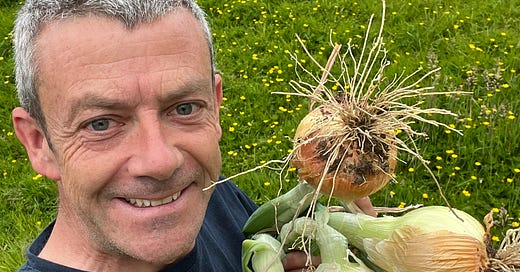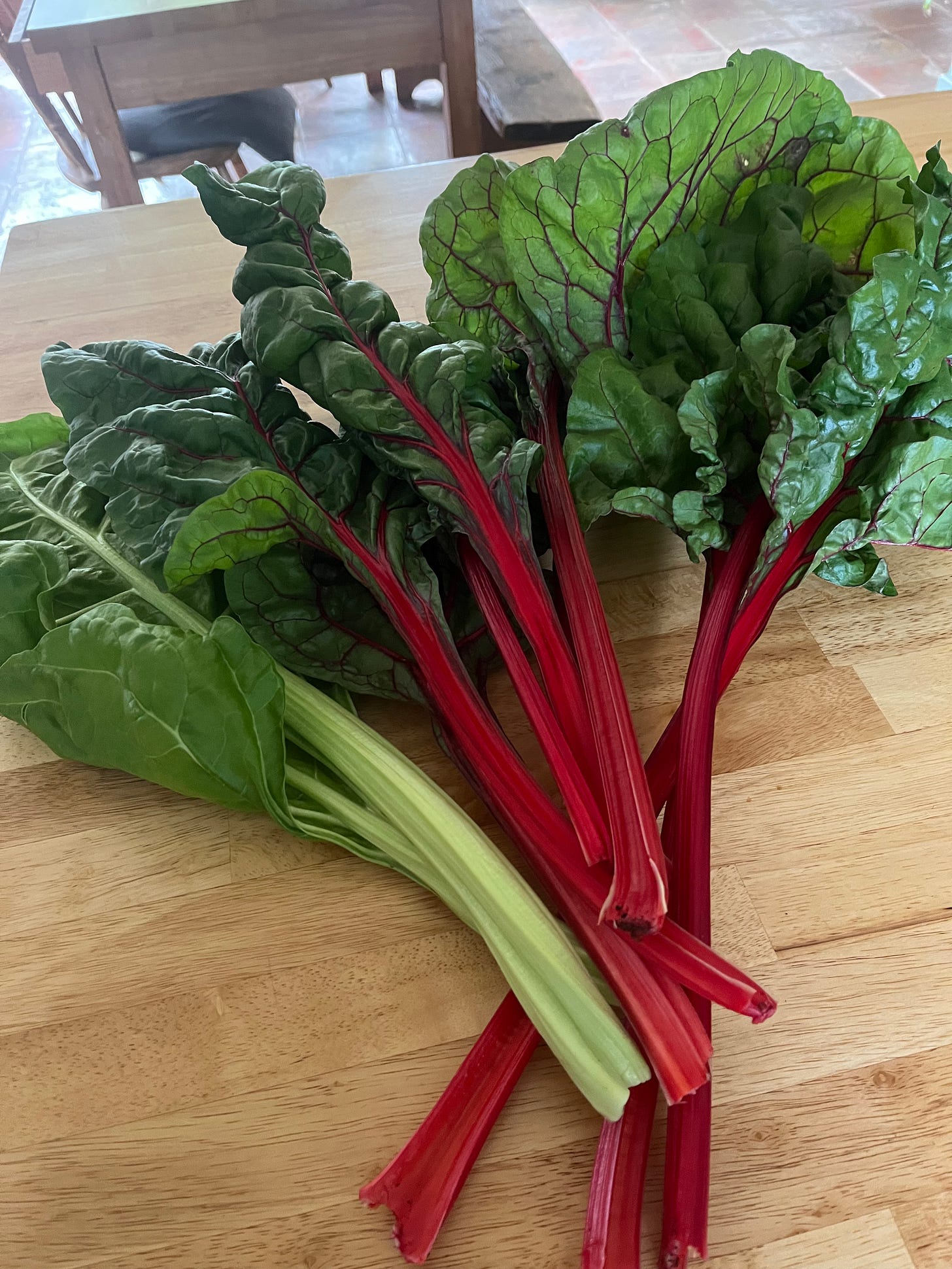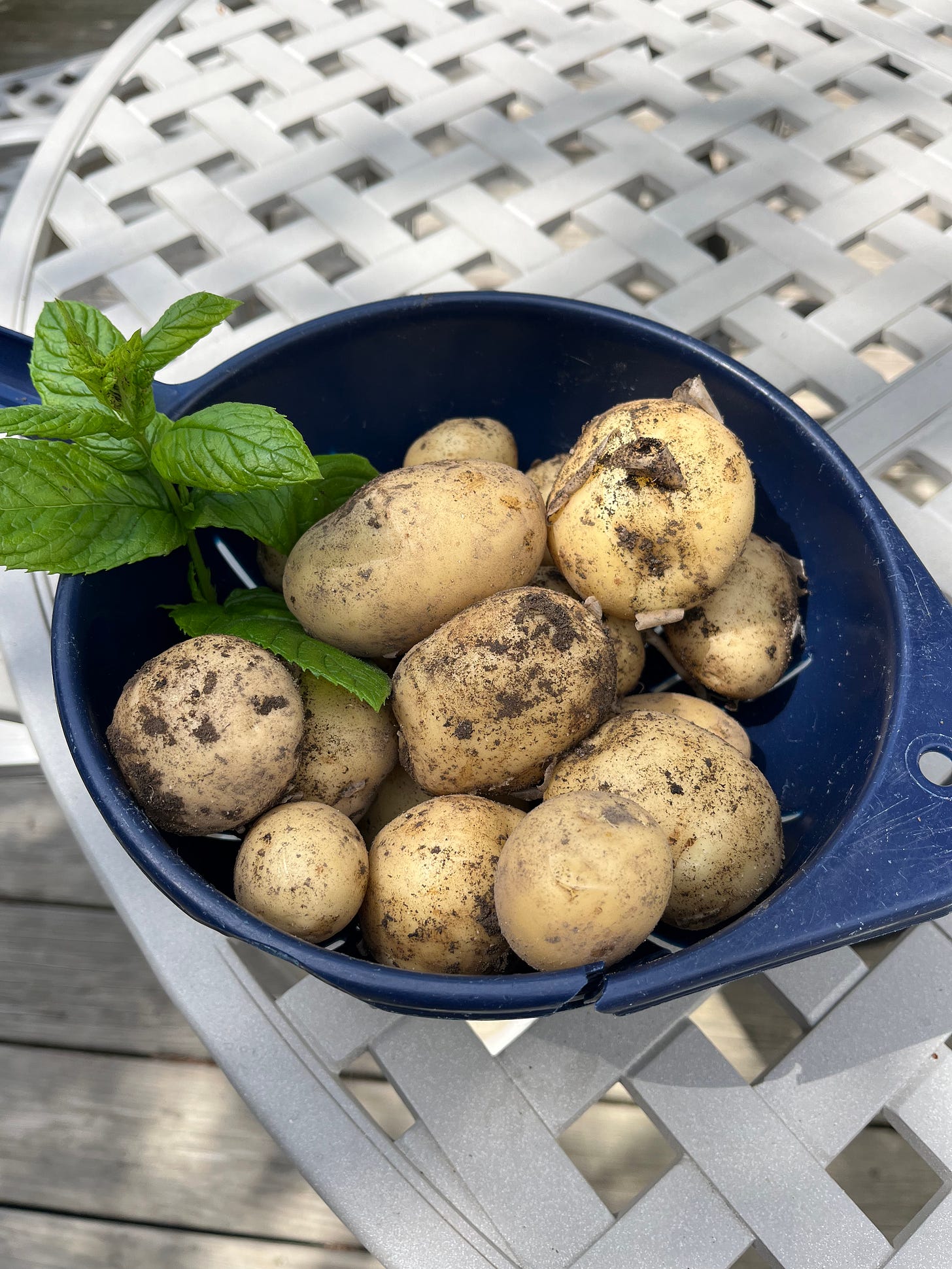The hungry gap is a term for that dreaded period in the GIYers' year when last year's produce has finished and new season crops haven't yet come on stream. The phrase harks back to a time when people were fearful of actually going hungry at that time of the year. It seems like a pretty quaint concept from the lofty heights of the modern age, where supermarkets are open 24/7 and seasonality doesn't seem to exist at all.
For all the alarming implications of the phrase, I like the idea of a vegetable-patch hungry gap. It reminds me that I have become more focused on seasonal eating and that my relationship with food has shifted and deepened. It gives me a connection with the ancient seasonal rhythms and an awareness that the food supply is temporary and fragile.
Now of course, when my own supply of produce wanes, our family doesn’t go hungry, thankfully (how lucky we are) - we simply go back to buying vegetables again, albeit reluctantly and with some frustration. Back in the day, the hungry gap was, of course, a far more serious proposition. I'm always intrigued by the notion that the variety of kale called 'hungry gap kale' was introduced in wartime Britain -- it was so called because this venerable brassica was to be celebrated for its ability to reduce the impact of the hungry gap since it could produce leaves right through the winter and spring.
After a few years of growing food, I was surprised to discover that the hungry gap doesn't happen in winter. In fact it comes much later in the growing season from March to June, practically butting up against the summer. Indeed, May and June are always the trickiest food months in my garden over the years - this always strikes me as deliciously ironic since it's also a time when one typically gets the first great surge of growth in nature. Richard our head grower talks about when he had his own market stall, customers would grow impatient at this time of the year, expecting tomatoes and other summer fruit to be available since it’s available in the supermarket, not realising that his tomato plants are still only a few feet tall, and only just about starting the produce the first small green fruits.
There are ways to lessen the impact and severity of your hungry gap. I've found the polytunnel to be of tremendous help in this regard, since it extends the growing season at both ends. A greenhouse will achieve the same thing. You can grow things in it later in the year, and you can start sowing in it earlier in the year than you can outside. For example, this year I sowed a few rows of early potatoes in the tunnel around the same time as the outside ones (in mid March) and they are ready nearly a month earlier than the outdoor ones. Similarly, the broad beans I sowed in the tunnel are at least 3 weeks ahead of the outdoor ones, sown at the same time (and they are healthier too). You can also ‘overwinter’ some veg in your tunnel where it can thrive in a way that an outdoor crop might not in a harsh winter - for example I sow onions from sets in October in the tunnel to give you a super early crop (available to eat as scallions from as early as late February and as decent sized onions from early April).
Some very timely sowings of very specific vegetables will also help diminish the impact of the hungry gap - having some healthy purple-sprouting broccoli, chard and kale plants in your patch outside, for example, will provide lots of delicious, nutritious food in the early part of the hungry gap, but all three are inclined to bolt and run to seeds/flower by early May. This of course coincides with the new season growth in plants that happens a that time. You can also still be eating leeks and celeriac ‘fresh’ from the ground in May if the winter has been kind.
I should also mention that the freezer and larder are vital tools in the battle against the hungry gap. The freezer might still have some French beans, frozen chillis or tomato sauces, and you could still be enjoying some crops in from your larder - a garlic braid might still be usable depending how much garlic you eat; pickles, chutneys and preserves of all sorts. A box of sand in the garage could still be home to some of last year’s beetroot. All of these hungry gap-busting options will only work if you were willing to spend the time in the autumn processing your gluts of vegetables.
Things really tighten up in May. The stores are nearly empty and the first harvests arrive as a trickle. There are generally at least salads to eat - the first oriental greens and heads of lettuce, particularly from the tunnel, supplemented with some other green ‘pickings’, marigold leaves, broad bean and pea shoots and the likes. There are scallions, tender rhubarb, and if you’re determined you could also go foraging - nettles for soup, wild garlic for pesto. The pickings are slim. The calorie count is low. Our poor veg box customers at GROW HQ are I am sure disappointed with the selection they are getting - we’re having to supplement the few bits we do have with produce from other suppliers including some imports. Richard grumbles that we are more greengrocer than growers at this time of year, and he has a point.
Then June arrives and the misery finally starts to come to an end. The harvests remain tentative for now, and it can not yet be called abundant. But at least there are some genuinely big harvesting moments - the first new potatoes to savour with a slab of butter; the first cigar sized courgettes (the perfect size actually for courgettes to be eaten, but done more so out of impatience rather than design); lifting the garlic (but not eating it just yet); new season chard and spinach from the tunnel; the first baby broad beans (small but perfectly formed). There is fruit too for breakfast and desserts in the form of strawberries and red currants.
It will be July really before things get really interesting - the first cabbage, peas, beets, tomatoes, cucumbers et al. Then we move from managing slim pickings to dealing with gluts. But at least now, an end is in sight and thank God for that.






